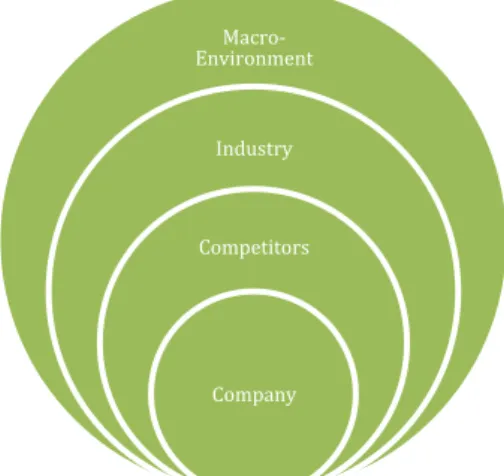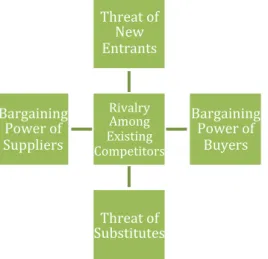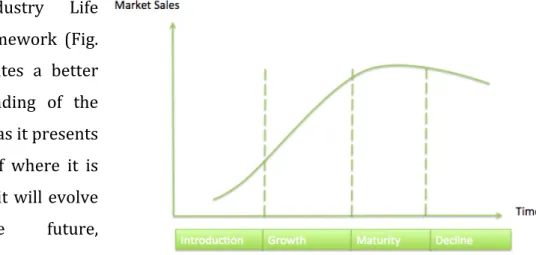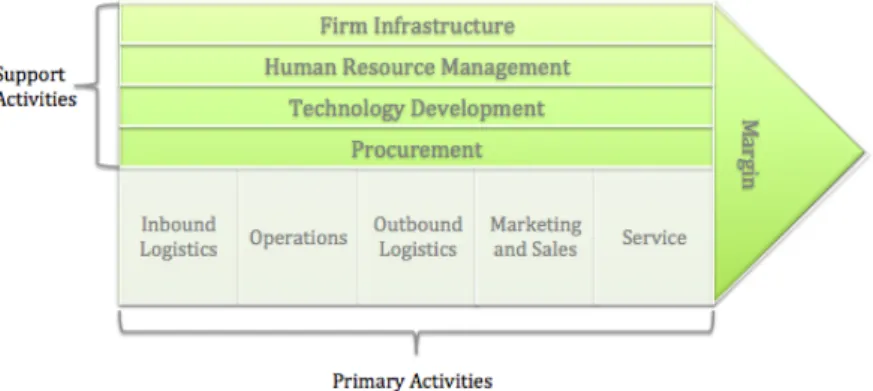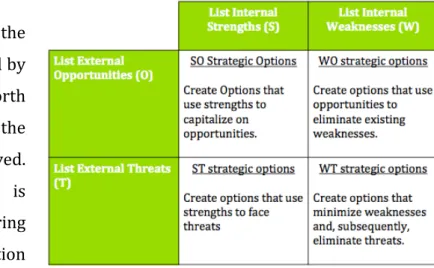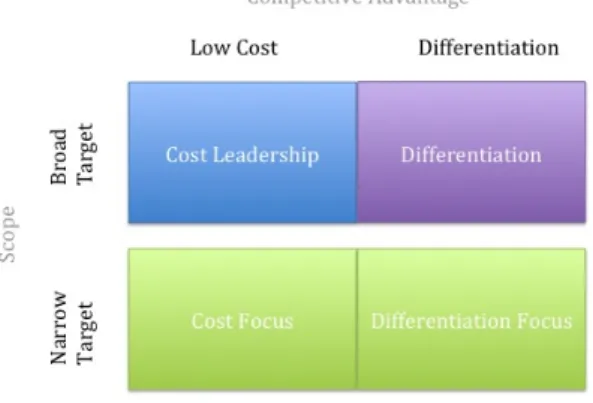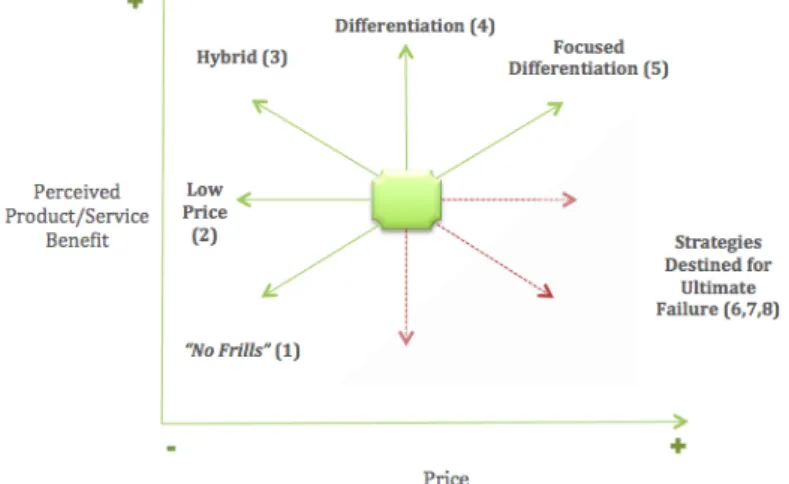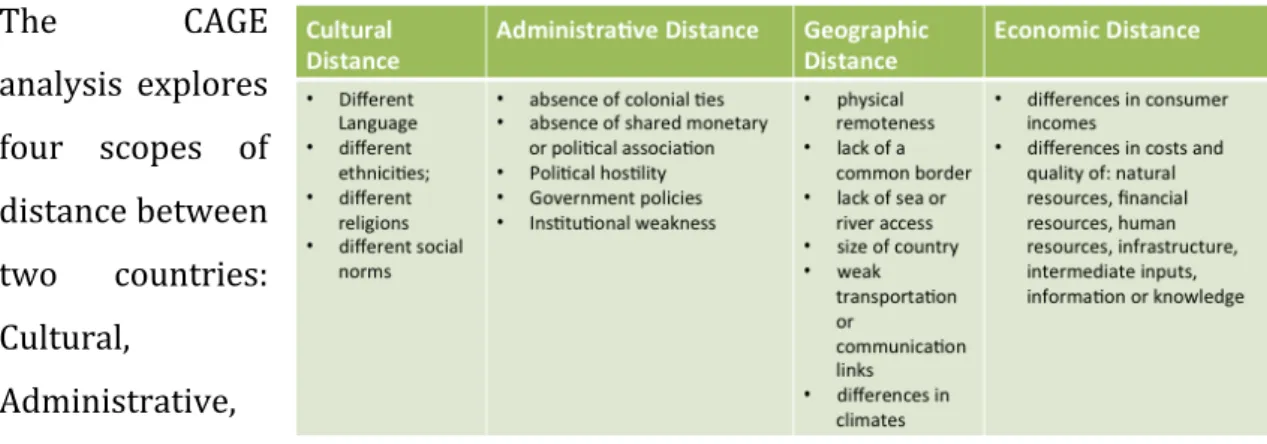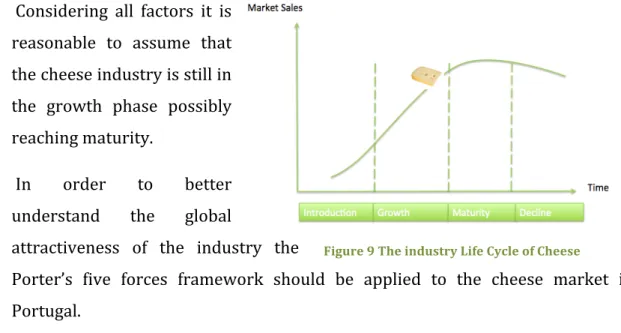Author: João Miguel Andion Boullosa Perry da Câmara | Advisor: Nuno Guedes
Dissertation submitted in partial fulfillment of requirements for the degree of MSc in Business Administration, at the Universidade Católica Portuguesa, 9th of January 2012
Queijo Saloio:
Abstract
Founded in 1968 by Vitório Alves and built upon the belief that “good milk makes a good cheese”, Queijo Saloio was Portugal’s most innovative cheese company. Under the supervision of Clara Moura Guedes, the organization conquered its place as leader in the cheese specialties segment. Such accomplishment was made through the creation of a diversified portfolio and strong positioning in the goat cheese market.
Despite having reached 26 million Euros in revenues in 2008, Queijo Saloio’s sales progressively decreased until 2011. In three years, the third largest organization in the Portuguese cheese market was being threatened by the macro-‐environment and the empowerment of large retailers’ private labels. In face of adversity, Clara Moura Guedes was weighing the hypothesis of expanding to Angola, an option that had been previously looked into in 2009.
Saloio’s path is an interesting subject of discussion, as it includes topics of product differentiation, positioning, the private labels phenomenon and internationalization. In this sense it may be analyzed in any marketing or strategy course, supported by the theoretical concepts proposed in a literature review.
The proposed reflection focuses mainly on the drawing of potential solutions to Queijo Saloio’s problems, assessing the viability of the expansion to Angola.
Resumo
Fundada em 1968 por Vitório Alves e construída sob o princípio que “bom leite faz um bom queijo”, a Queijo Saloio era a empresa de queijos mais inovadora em Portugal. Com a supervisão de Clara Moura Guedes, a companhia conquistou o seu lugar como líder no segmento de especialidades do queijo. Este feito foi conseguido através da criação de um portfólio de produtos diversificado e um posicionamento forte no mercado do queijo de cabra.
Apesar de ter atingindo 26 milhões de euros em receitas em 2008, as vendas da Queijo Saloio decresceram progressivamente até 2011. Em três anos, a terceira maior empresa no mercado de queijos em Portugal estava a ser ameaçada pelo ambiente macro e pela crescente força das marcas brancas dos grandes distribuidores. Face à adversidade, Clara Moura Guedes considerava a hipótese de expandir para Angola, opção que tinha sido estudada em 2009.
O caminho da Saloio é um tema interessante de discussão pois inclui tópicos como a diferenciação do produto, posicionamento, fenómeno das marcas brancas e internacionalização. Neste sentido pode ser analisado em qualquer curso de marketing ou de estratégia, suportado por conceitos teóricos proposto na revisão de literatura.
A reflexão proposta foca-‐se essencialmente no desenvolvimento de potenciais soluções para os problemas da Queijo Saloio, analisando a viabilidade da expansão para Angola.
Acknowledgments
I would like to make a reference to everyone that has contributed to the development of my master thesis.
In the first place, I would like to thank Dra. Clara Moura Guedes for her extremely helpful insight, information sharing and patience with me during these months. Without her precious help, it would have been impossible to develop this project. Secondly, I am grateful to my master thesis advisor Nuno Magalhães Guedes, for his constructive feedback, support and guidance that has proven to be essential in the most difficult times.
Finally I would like to thank my family and friends for their perseverance and capacity to listen repeatedly to my problems. In particular, I am thankful to my colleague Inês Amaral for being of great assistance during difficult times and for motivating me throughout the semester.
Table of Contents
Abstract ... ii
Resumo ... iii
Acknowledgments ... iv
I. Introduction ... 3
II. Case Study ... 4
QUEIJO SALOIO: THE WOMAN WHO STARED AT GOATS ... 5
THE BACKGROUND ... 5
THE COMPANY ... 7
The Goat ... 10
THE GLOBAL PROBLEM ... 12
A Long Path ... 12
Old “Friends” ... 13
New Threats ... 13
THE FUTURE ... 15
EXHIBITS ... 18
Exhibit 1 -‐ The different categories and types of products ... 18
Exhibit 2 – Market share evolution ... 22
Exhibit 3 Levels of product experimentation of their portfolio in 2006 ... 22
Exhibit 4 Prizes the company has received ... 23
Exhibit 5 Queijo Saloio Sales ... 24
Exhibit 6 Consumption of cheese per capita in 2009 in Kg/Hab/Year ... 24
Exhibit 7 Cheese Market Value Evolution ... 25
Exhibit 8 Angola GDP Evolution ... 25
III. Literature Review ... 26
1. THE ENVIRONMENT ... 26
2. STRATEGIC DECISIONS ... 32
3. THE INTERNATIONALIZATION ... 35
4. THE CONFRONTATION ... 37
IV. Teaching Note ... 41
1. CASE SYNOPSIS ... 41 2. LEARNING OBJECTIVES ... 43 3. ASSIGNMENT QUESTIONS ... 44 4. CLASS PLAN ... 45 5. ANALYSIS ... 46 V. Conclusion ... 63 VI. Appendix ... 65
TIME ALLOTMENT GUIDE FOR THE CLASS PLAN ... 65
VII. References ... 69 ARTICLES ... 69 BOOKS ... 70 WEBSITES ... 70 OTHERS ... 71
Table of figures
Figure 1 Layers of the Environment ... 26
Figure 2 Porter's Five Forces ... 27
Figure 3 Industry Life Cycle ... 28
Figure 4 Value Chain ... 30
Figure 5 TOWS Matrix ... 31
Figure 6 Porter Generic Strategies ... 32
Figure 7 Strategy Clock ... 33
Figure 8 Ansoff Matrix ... 33
Figure 9 The industry Life Cycle of Cheese ... 48
Figure 10 Strategy Clock of the companies in the cheese industry ... 51
Figure 11 Factors leading to private labels growth ... 55
Figure 12 CAGE Analysis to Angola ... 58
Figure 13 SWOT analysis for Saloio ... 60
I.
Introduction
This dissertation includes the development of a case study of the most innovative cheese company in Portugal– Queijo Saloio –, evidencing the reasons that led to its success and the menaces that were threatening the business.
Queijo Saloio has been operating in the Portuguese cheese market since 1968. Nevertheless, it was only in the last sixteen years – with the arrival of the new management team – that the company stood out from the competition creating a strong position in the industry. Facing a setting of intense rivalry, Clara Moura Guedes knew that the only way to succeed would be to differentiate the products from the other players. The outcome was that Queijo Saloio became the market leader in the specialty cheese market, and the third largest player in the global cheese industry.
The aim of this dissertation is to provide an analysis that might be useful for an instructor that uses the case in a class discussion in strategy courses. This essay is divided in three main parts: case study, literature review and teaching note. The first section will describe the strategy of the company throughout the years and also the developments in the cheese industry in Portugal, providing necessary information for a class debate.
The literature review acts as a bridge between the case study and the teaching note. In that section several strategic tools will be discussed and explained, being then applied to Saloio on the following section.
The summary of the case study, the examination of the strategy of Saloio, through the application of strategic tools, and the guidelines to support the class discussion are all present in the teaching note section.
Only with time it will possible to observe if Queijo Saloio will continue to succeed and innovate or succumb to the rising threats. Until that moment, students are invited to discuss and suggest strategies that may bring future triumphs.
II. Case Study
Queijo Saloio: The Woman who stared at Goats
Clara Moura Guedes, member of the board of directors and managing director, had completely revolutionized the organization’s activity at Queijo Saloio. After an initial proposal for a one year contract, Clara ended up falling in love with the company and the cheese industry. Sixteen years later, she still had some more tricks under her sleeve to improve the business.
Queijo Saloio went from a small family owned company to leader in the cheese specialties segment and third largest organization in the Portuguese cheese market. A strategy of constant product innovation and brand enforcement was at the basis of this success, reaching 26 million Euros in sales in 2008.
Then, in 2011, several issues worried Clara. Among them, was the fact that Portugal was suffering from the European debt crisis and it was expected a decrease in consumption. In addition, its largest clients, retail companies, had become extremely price sensitive -‐ in part due to the concentration process that the distribution industry had gone through during the last decade -‐, and were progressively focusing on private labels. Such situation had clear consequences on the decrease of sales witnessed during these 3 years.
As Clara stared at one of her paintings that said “Positive Attitude – it changes everything”, she wondered in which direction Queijo Saloio should go. In light of these new events, a possibility would be to internationalize the production to Angola. Even though this option had been dismissed in the past due to the high risk involved, Clara felt that it could be the only way to keep Queijo Saloio going forward.
The Background
Vitório Alves founded Queijo Saloio in 1968. The company started as a small agricultural exploration where the owner processed his own cattle milk in order to produce regional cheese. Despite having a rather negative connotation –
usually used to describe people that are not from urban areas – the word Saloio was chosen because it related to the cheese’s original place1.
Vitório strongly believed that “good milk makes a good cheese”, a motto that guided the corporate strategy and that led to the success of its products, marking Saloio’s place in the market. Indeed, the growing demand for company products drove several innovation processes during the eighties. Among them, the introduction of a Quality Control System in 1982 and the expansion of the plant in 1986, allowing an increase in the production capacity with the installation of new production technology and infrastructures.
In spite of having been serving customers for almost three decades, in 1994 Queijo Saloio’s management strategy was still outdated. This situation rose serious issues for the firm as it did not manage to create a clear brand identity, or to align its distribution strategy with corporate objectives.
In which came to the inexistence of a strong brand identity, it could be seen through the problems clients had in distinguishing the three quality cheeses offered – Regional, Serra da Vila and Queijo Fresco. This happened due to the inexistent investment in advertising and the fact all three products shared the same name (Saloio). When considering the distribution strategy, the way it was defined made it difficult for customers to purchase Saloio products since only 15% of sales were channeled through modern distribution retailers2.
Nevertheless, this type of management procedures was very common in the industry. The majority of the market was still made of small sized traditional companies, with limited market power. It was an extremely fragmented sector. Consequently, ESDCIL3, an investment fund -‐ in which George Soros was present
-‐ acquired several companies of the sector. The objective was to modernize and develop them to obtain added value so the firms could be sold in the near future.
1 The Saloio region includes areas around Lisbon like Torres Vedras, where the
firm is located.
2 Such as Discounters, Gourmet Stores, Supermarkets and Hypermarkets. 3 Espírito Santo Development Capital Investors
This process resulted in several M&A’s, leading to the creation of the Lacto Ibérica group4.
The new group profited from economies of scale and market power, attracting the attention of the French multinational Bel Group -‐ the current market leader – that was looking for an entry opportunity in the Portuguese industry. Bel ended up acquiring Lacto Ibérica in 1997.
In response to the entry of the Bel group in the market, three big Portuguese milk cooperatives merged creating of Lactogal5.
Queijo Saloio was also purchased by the investment fund in 1995. Nonetheless, its destiny was not the same as the other firms’. Due to the company characteristics, there was not a fit with the other investments in the fund – making it difficult either to merge or to sell it. So, in what the future strategy of Saloio was concerned, the fund decided to follow a different approach.
The Company
Changing the way of thinking
In 1995, Clara – who had a strong background in marketing and product management in different mass consumer goods companies -‐ was invited by the investment fund for a one-‐year contract to change and improve the situation of Queijo Saloio. At the time, she had never worked in the cheese industry. Nonetheless, after some research it had already become clear to her that she was dealing with a fragmented market with two clear leaders in the industry (at the time Lacto Ibérica and Lactogal), which easily engaged in price competition, and an undifferentiated product.
In fact, also due to the extensive history of the product -‐ cheese was being consumed since times prior to the Roman Empire period -‐ the market in Portugal saw it almost like a commodity. On the contrary, not every country perceived
4 The companies that made up the group were Lacto Lima, Lacto Lusa, Lacto Açoreana, Loreto and Covoada
cheese as an undifferentiated product. Charles de Gaulle, for example, even used cheese to criticize France when he asked: “how can you govern a country where there are 246 kinds of cheese?”.
This market characteristic was precisely the basis of the strategy decided for the company in 1995. In this sense, the three pillars for the strategy were growth, profitability and excellence (in terms of the product offering and at the operational level). The only way to bring these pillars to life was through innovation. “But how could innovation be achieved in an industry that had existed for centuries?”, Clara worried.
During that period in Portugal, there were two main types of milk used to produce cheese: cow or sheep milk. Those two required a smaller effort to assure a yearlong production.
In order to differentiate from competition, Queijo Saloio made an experiment with cheese made of goat milk. This category of cheese was underdeveloped in the market and the big players showed no intentions to produce it. Additionally, the taste was considered delicious and different from anything else in the market. That is how Palhais was born.
The Palhais Revolution
Queijo Saloio had found a clear spot in the market, but its entrance was not immediate since it was more complicated to find any large goat milk producer, than Clara had expected; instead the company only found shepherds. Although resulting in a very tasteful cheese, the goat milk was hard to collect and had higher seasonality than the other kinds of milk. Shepherds were only interested in selling goats for Christmas and Easter traditional meals; hence they were careless about any kind of milk timing, making it extremely difficult for the company to offer the cheese all year round.
To solve this situation, Saloio offered a support service to the producers, showing them, among other activities, how much money they could make by starting producing milk. Within that service, the company created banking accounts to make money transfers quicker and easier for the shepherds. Plus, it was used a
price incentive scheme under which the firm paid more to the producers during the low seasons.
After overcoming these initial challenges, Saloio introduced its first goat milk cheese in 1998: the Palhais Original. Market’s reception to the product’s distinct flavor marked the beginning of the brand Palhais.
Under the new brand name, the company developed a large portfolio for different kinds of consumers and for various occasions. Although Clara considered it difficult to describe the target consumer, she believed that “he lived an urban lifestyle, took advantage of high income availability, and valued convenience and differentiation”. However, Saloio also had other customers coming from rural areas and characterized for “being more demanding and more informed at every level”.
To achieve this continuous product diversification and so as to satisfy the demanding characteristics of the target consumer, the firm developed several partnerships with different universities (Universidade Católica do Porto, Universidade do Minho, Instituto Superior de Agronomia, Universidade de Santiago de Compostela, among others) that assisted in the creation process of the different products. Innovation at Queijo Saloio was based on three main axes: convenience, pleasure and health and nutrition.
In 2001, following the diversification and innovation path, the company acquired Barral in order to reinforce Queijo Saloio’s position in the market and to allow the enlargement of the product portfolio. Holding the fourth position in the market, Barral was a producer that also tried to diversify its products, with a focus on big cheeses – a type of product that was not developed at Saloio. This ended up being a great opportunity, because it reinforced the position of the company in the market and allowed an enlargement of the product portfolio. By 2011, the results of this product diversification -‐ extended not only to the goat milk products but to others as well -‐ were significant: an average of 10 new references per year, 20% of net sales from products that had been launched less than three years earlier and a total of about one hundred references organized in
nine different categories (Exhibit 1 describes the different categories and types of products).
Furthermore, to secure these goods’ success, Clara was certain that convenience needed to be improved. After all, this was a key aspect for the target consumer. As in any developed society, modern distribution offered convenience to consumers and on this area Saloio had a lot of opportunities of growth.
One of the first measures that the new management team took was the development of specialized sales teams in each distribution channel. This would translate into a fit between what retailers wanted and what Saloio could offer. Such aspect, associated with a diversified portfolio and capacity to supply all year long, ensured an aggressive expansion into the different channels, and in particular into the modern distribution – representing, in 2011, 80% of the company’s sales.
Even though an outside company secured the transportation process, Saloio guaranteed quality -‐ products were constantly being controlled during the production chain, paying special attention to the expiration dates and maintaining a cold environment. Delivery to 450 points of sale in Portugal was assured within 12 hours after the order.
With a diversified product, a strong quality brand, in a goat milk market with no sharks (Bel and Lactogal), Saloio decided to charge a premium price. This implied higher margins, which would be helpful not only for the negotiations with retailers, but also for the constant investment in innovation. Additionally, with this move, Saloio would be avoiding price competition-‐ Queijo Saloio had the most expensive products in the market. .
Such approach was extended to more competitive sub segments – for instance in products that used cow or sheep milk thus directly facing the big players.
The Goat
The cheese market in Portugal was typically traditional. When it came to advertisement, the investment was almost null and Queijo Saloio had opted for this industry practice.
Nonetheless, Clara’s strong background in marketing allowed her to understand that this was an area in which the company had to invest. Otherwise, all the work developed would be hard to convey to the consumer. Hence, she decided to start with the brand, as it was her strong belief that a robust brand would begin ensuring quality, trust and safety to the consumer.
Saloio made its first appearance on television in 1996. Although milk advertisements were common at the time, the same was not true with cheese products. As a result, the company received a vast share of voice and, from that moment on, it became evident that the investment in advertisement would have to increase in order to help strengthening the brand.
Regarding the brand Palhais, Clara felt that an extra effort should be done, since it was a new product aiming at the underdeveloped goat cheese market. The initial idea was to personify the brand into something that people could relate to and simultaneously promote the product. That is why the goat became the symbol of the brand.
The animal’s image was used on every package and television advertisements, from 2003 onwards. Additionally, with the increasing importance of social networks, a Facebook page was created where the goat interacted with the fans by talking about daily life aspects, promoting contests and mentioning the blog where cheese recipes were posted6.
Throughout the years Queijo Saloio used several advertisement techniques to increase its space and awareness in the market, such as radio advertisement, bundle promotions (with wine and juice companies), price discounts to the retailers and final consumer, gifts attached to the packages (for instance small knifes that were useful to spread the cheese), samples and handouts in the retail stores, contests with eye-‐catching prizes, like a trip around the world or an intra-‐ rail in Portugal, among others.
The Global Problem
A Long Path
During these sixteen years Saloio had changed in many ways. It became the company that offered the largest product portfolio, which was quality controlled and supplied the consumer during the whole year. It had the third highest market share value in the market of all kinds of cheese (See exhibit 2 with market share values) and was the leader in the specialties market, with 44% in 2009, thanks to Palhais.
In addition, the company enjoyed a strong awareness and experimentation levels (Exhibit 3 shows the levels of product experimentation for several products). In 2008, Saloio had agreements with 250 milk producers (190 corresponding to goat milk producers, 36 to cow milk producers and the remaining 24 negotiated sheep milk) providing more than 20 millions liters of milk and 4 thousand tons of cheese per year. The goat producers were contractually connected to the firm, making it the biggest goat milk collection operation in the country. However, due to the high demand and the commitment to offer the products throughout the whole year, the company had to import between 20% and 30% of the goat milk supply from Spain.
Part of the success was due to the capacity to understand how the market was going to evolve consequently offering convenience and diversification. To achieve diversification the company turned out to be one of the most innovative in the sector. This factor resulted in a series of product prizes and distinctions awarded to Saloio (Exhibit 4 shows prizes received by the company).
Nevertheless, by 2010 one issue was worrying Clara. The sales level was decreasing considerably when compared to the previous years. This led to an investigation of what was behind this fall and of possible dangers for the next years (Exhibit 5 shows the sales from 2007 to 2010).
Old “Friends”
The cheese market in Portugal did not evolve as expected during the last years. In terms of consumption, the level was significantly behind some European countries (Exhibit 6 shows the consumption of cheese per capita). Moreover, the industry was still underdeveloped with several family owned companies and three big players – Bel, Lactogal and Saloio. In fact, the last concentration move in the market was the purchase of Barral.
Bel had one advantage over the other two competitors. It could leverage the fact that it belonged to a multinational firm, present in 122 countries and with a 150 year old history, know-‐how, market expertise and, more importantly, superior financial capacity. All these conditions allowed strong investments in the production capacity7, which supported its market position as leader – the
company made 104 million euros in 2005.
Lactogal’s major difference from Saloio and Bel, was that the company was not only focused on cheese, but was a player in several distinct product categories. In fact, Lactogal sold many different goods like milk, condensed milk, yogurts, cheese, water, juices, cream and whipped cream.
In recent years, both competitors lost market share, although the market was increasing in value (See exhibit 7 for the market value evolution).
New Threats
Part of the market value increase was explained by the entry of retailers’ private labels. While in 2003 private labels had a 10,1% market share, seven years later these percentage was already 21,9%. The entry was so strong (particularly in products with higher sales volume) that even the goat cheese niche – Palhais segment – was attacked..
Part of this was a consequence from the fact that in those 7 years the concentration on the distribution industry had significantly increased, as the market was being controlled by two large groups: Sonae and Jerónimo Martins,
amongst several other smaller players. These groups were investing in private labels not only through marketing support – constantly advertising its low prices – but also by enlarging its portfolio with the introduction of gourmet products, for example. Moreover, Belmiro de Azevedo (president of the administration board of Sonae) estimated that by 2016 half of the goods sold in Sonae’s stores would be private labels.
Thanks to the strategy based on convenience, those two groups accounted for 60% of Saloio sales in 2010. Hence, due to the concentration and the importance of being the most used channel, retailers gained a lot more bargaining power with their suppliers.
In this sense, even though Palhais was not yet being significantly affected by the empowerment of private labels (due to end consumers’ higher loyalty levels) the relationship with retailers had been deteriorating. In fact, Saloio had to fight for more shelf space, had to face pressure on margins and resist to its new competitors’ lower prices.
Clara viewed this competition as a real problem. “The market situation in Portugal had been becoming extremely unfair for the small and medium sized companies like Saloio. While some years ago if one of our clients offered harsh conditions it was possible to negotiate with several others. At this point, we have no chance to bargain, since there are only two possible customers. Most of the times we are left with no choice but to accept what they offer. As a result, our margins started being considerably affected and there was nothing we could do to avoid it. As if that was not enough, the retailers’ strategy to encourage private labels creates a conflict of interests. These groups can compete with their own products and, at the same time, have access to our price and promotional strategies.”
In addition, to minimize the threat and as Queijo Saloio was always attentive to emerging opportunities, it started producing for some private labels.
Moreover, there were other macroeconomic factors affecting the business of Saloio. The first one started in 2008, with the commodity price speculation created by the increasing oil price. As a consequence, the cost of milk – that
accounts for 70% to 80% of the cost of production -‐ to rise 40% during that year and stabilizing on the following years. The second serious situation happened during the European Debt crisis, in the beginning of 2010, which had a severe impact in the Portuguese economy. The gravity of Portugal’s financial setting was such that it led to the intervention of the International Monetary Fund and the election of a majority government in 2011.
All these events changed the consumer behavior. Clients had become more price sensitive (comparing prices more often), used all kinds of discount offers, and were more informed and demanding, leading to a general trend of price reduction.
Still, there was one topic that seemed to point out the future direction of the company. In 2006, international sales represented 1% of total volume, but in 2009 that number rose to 7,4%. Saloio sold its products to 16 countries, amongst which was Angola, which had been a hot issue inside the company in the past.
The Future
Angola had been a colony of Portugal until 1975. After several centuries under the Portuguese ruling and influence, it became independent upon the revolution that took place in that country in 1974. Nonetheless, once the Portuguese departed, Angola was ravaged by a civil war, which only ended in 2002. This factor extensively delayed the economic development of Angola’s nation.
Angola is an extremely rich country in terms of raw materials. In fact, after the end of the civil war, GDP increased by an average of 20% between 2005-‐2007 (exhibit 8 Shows Angola GDP evolution). Notwithstanding the country’s high levels of oil and diamonds, accounting for 60% of its economy, it is still a place marked by social problems. In effect, 37% of the population lives below the line of poverty and it ranks in the 146th position (in 169) of the Human Development
Index.
In 2005, several large Portuguese companies started going to Angola. The reasons ranged from the common language, to the economic growth and the
multiple opportunities the country was offering – the Angolan government was very interested on foreign know-‐how and investment to rebuild the country. Clara was paying close attention to these developments and wanted to explore the opportunity. Therefore, in 2005, Saloio was present in the International Fair of Luanda (FILDA) with the objective to find a distributor for Angola.
Their mission was successful and a South African distributor named Oxbol was found. This company had cold distribution capacity, essential due to the nature of Saloio’s products. Still the only available transportation was also the most expensive: plane. The harbor of Luanda was extremely overcrowded – in part thanks to bureaucracy and corruption– and it could take 3 months to clear the products. That was unconceivable because of the product’s expiration dates. These limitations combined with the distance between the two countries meant that several products of the portfolio could not be sold in Angola.
Nevertheless, the cheeses had a very good acceptance in the market, partly due to Angolans’ preference for foreign products (to them, foreign was almost a synonym for quality).
Seeking a clear market opportunity, a study was conducted to analyze the feasibility of a plant in Angola that could make possible the commercialization of all products of their portfolio in the country.
In 2009, Angola was also affected by the global crisis and its economy ended up slowing down. In that same year, Clara traveled throughout the south of that country where she thought there were favorable conditions (high altitude) for cattle raising. While she was accurate about the good conditions to cattle creation, there were no signs of cattle in that region. Despite making several visits to other manufactures, these were either concentrated on other activities or were unable to assure the desired quality or quantity.
As no manufacturer or partner was found, the trip ended up being a failure. Two years after the visit, Saloio still received several contacts from potential partners. Each one seemed to know several generals and ministers but they were not trustworthy.
In 2011, Saloio was once again contacted by a possible partner, who already had projects undergoing in Brazil and Mozambique, and was planning to expand to Angola and start with cattle creation in 2012. It could be a possibility.
Clara was reflecting on this information and trying to figure out the pros and cons. There seemed to be many advantages: no agribusiness in the country, goodwill of being Portuguese, cheaper labor costs and raw materials (thanks to favorable weather conditions) and the fact that there was no other competitor established there, apart from Lactogal, which was exporting to the country. But, there were also serious concerns, such as bureaucratic, economic and political risks, the know-‐how that needed to be transferred and the training costs. Moreover, with the debt crisis, and the banks cutting on lending, could the company gather the funds necessary to start the new project?
Would this be the right strategy to fight back the decreasing margins, the more price sensitive customers, the private labels and the expected decrease of sales due to the economic crisis that Portugal was facing?
Clara could not stop wondering if this would be the company’s biggest mistake or, on the contrary, the next success after innovating with Palhais.
Exhibits
Exhibit 1 -‐ The different categories and types of products
Hard and Specialties
• Cheese of cow, sheep and mix of both milks
• Traditional flavors • Diversity of formats • Health beneficial products • Convenient formats
Hard and Specialties
Goat -‐ Palhais
• Cheese of Goat milk • Intense flavors
• Easy digestion and
absorption
• Ideal for people intolerant to lactose
Cottage Cheese
• Traditional cottage cheese • Cottage cheese spread
(innovator process
patented) • Uniform dose
• Health beneficial products
Creamy
• Traditional flavor and strong brands
• Convenience of
consumption • Competitive price • One light product
Fresh
• Health beneficial products • Most competitive price in
the market • Uniform dose
Saloio Gourmet
• Exotic flavors • Unique ingredients• Premium package and presentation
Fresquinho
• Fresh cheese• Health beneficial products • Variety of flavors
• Includes several deserts • Products without dyes and
preservatives
Saloio Professional
• Products adapted to the professionals of the Horeca channel
• Practical solutions • Friendly use packaging
Source: Saloio, Institutional presentation
Foreign
• Greek, Italian and Dutch products
• Products adapted to the Mediterranean diet trend • Substitutes products to
cheese
Exhibit 2 – Market share evolution
Source: Saloio, Institutional presentation
Exhibit 3 Levels of product experimentation of their portfolio in 2006
Source: FoneBus, Marktest
20,7% 20,7% 19,2% 19,2% 18,9% 12,8% 11,9% 10,1% 8,5% 8,1% 5,8% 6,1% 5,8% 5,5% 5,7% 2,1% 2,2% 2,2% 2,2% 2,1% 2,6% 2,5% 2,5% 2,3% 2,5% 18,2% 20,7% 22,8% 22,6% 22,7% 0,0% 5,0% 10,0% 15,0% 20,0% 25,0% 2006 2007 2008 2009 YTD September 2010
Market Share Evolution
BEL LACTOGAL SALOIO PAIVA SANTIAGO PRIVATE LABELS 71% 47% 44% 42% 22% 28% 15% 14% 17% 6% 0% 20% 40% 60% 80% Palhais Regional Cottage Cheese Alavão Serra da Villa
Experimentation of the brand Saloio
Exhibit 4 Prizes the company has received
In 2007, the cheese Sítio da Perdiz was distinguished in the “World Cheese Awards” at Brussels
In 2009, the cottage cheese to spread was awarded “Product of the year” – Great prize of Marketing Innovation, in the category of cheese to spread.
Also in that year, Palhais Rústico and Sítio da
Perdiz received the prize of best cheese in the respective categories by the National Association of the Dairy Industry. In 2010 edition, the company got two winning cheeses -‐ Palhais Rústico Pimentão and ‘Três Igrejas 6 meses -‐ in the cheese of goat and mix cheese category. Saloio also obtained four honorable mentions.
In 2011, Saloio won 6 prizes in the International Cheese Award at Nantwich, England.
Regional and Palhais Rústico Pimentão were awarded with gold medals in the category of Territorial Cheese and Best New Dairy Product.
Saloio was positioned in second placed in the categories of Single Cheese Mixed Milk and Single Low Fat Cheese. And got one bronze medal in the Cheese with Health Benefits
category. Palhais Rústico Pimentão won the Sainsbury troffy with the Best New Diary Product
Source: Queijo Saloio Official Website
Exhibit 5 Queijo Saloio Sales
Source: AC Nielsen
Exhibit 6 Consumption of cheese per capita in 2009 in Kg/Hab/Year
Source: CNIEL (Centre National Interprofessionnel de l´Économie Laitière), France
24 992 254 € 26 015 347 € 23 261 580 € 22 336 192 € 20000 000 € 21000 000 € 22000 000 € 23000 000 € 24000 000 € 25000 000 € 26000 000 € 27000 000 € 2007 2008 2009 2010 Sales 0 5 10 15 20 25 30
GreeceFrance Ita ly Germa ny Austri a Swed en Nethe rland s Denma rk Finland Belgi um/Lu xemb ourg Portu gal Unite d King
kdom SpainIrelan d
Exhibit 7 Cheese Market Value Evolution
INA – Índice Nacional de Alimentação – is an index in which are included all stores that sell food.
Source: AC Nielsen
Exhibit 8 Angola GDP Evolution
Source: International Monetary Fund 303 703 056 € 328 505 414 € 375 343 424 € 380 703 581 € -‐ € 50000 000 € 100000 000 € 150000 000 € 200000 000 € 250000 000 € 300000 000 € 350000 000 € 400000 000 € 2006 2007 2008 2009 INA 3,14% 14,53% 3,31% 11,18% 20,61% 20,74% 22,59% 13,82% 2,41% 3,41% 0,00% 5,00% 10,00% 15,00% 20,00% 25,00% 2001 2002 2003 2004 2005 2006 2007 2008 2009 2010 Angola GDP
III. Literature Review
The main objective of this Literature Review is to provide theoretical concepts and management frameworks, which will be applied in the Teaching Note when analyzing the strategy of Queijo Saloio. This section will be divided in four areas that are linked to the case study development: The Environment, offering tools that examine the overall landscape; The Positioning, explaining different company positioning strategies; Internationalization where approaches to go abroad will be described; and the final part will grapple the conflict between Private Labels and Brands.
1.
The environment
1.1 PEST Analysis
A company is not isolated; instead it is inserted in a business environment divided in several layers, of which the Macro-‐environment is the broadest – as it is possible to observe on figure 1. The most common strategic framework to be applied in the analysis of the mentioned layer is the PEST framework. Throughout
time, the framework has evolved as some new taxonomic classifications were added, to expand the scope of analysis, among which it is possible to find PESTEL (Burt et al. 2006).
The PESTEL framework divides the environment into six categories and it stands for Political, Economic, Social, Technology, Environmental and Legal. Its main objective is to determine the factors that impact the company’s actions, organized in the referred categories (Johnson, Scholes, and Whittington 2008).
Macro-‐ Environment
Industry
Competitors
Company
Figure 1 Layers of the Environment (Johnson, G., K. Scholes, R. Whittington (2008) Exploring Corporate Strategy, London: Prentice Hall, p. 64)
